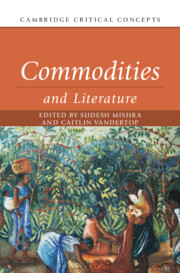Refine search
Actions for selected content:
571 results

Commodities and Literature
-
- Published online:
- 14 October 2025
- Print publication:
- 09 October 2025

Ancient Assyrians
- Identity and Society in Antiquity and Beyond
-
- Published online:
- 09 October 2025
- Print publication:
- 23 October 2025
2 - Europe from Obscurity to Economic Recovery
-
- Book:
- An Economic History of Europe
- Published online:
- 02 October 2025
- Print publication:
- 02 October 2025, pp 39-63
-
- Chapter
- Export citation
1 - The Making of Europe
-
- Book:
- An Economic History of Europe
- Published online:
- 02 October 2025
- Print publication:
- 02 October 2025, pp 15-38
-
- Chapter
- Export citation
8 - Trade and Globalization
-
- Book:
- An Economic History of Europe
- Published online:
- 02 October 2025
- Print publication:
- 02 October 2025, pp 178-203
-
- Chapter
- Export citation
24 - European sea power and the origins of European domination, 1800–1850
-
-
- Book:
- The Cambridge History of War
- Published online:
- 18 July 2025
- Print publication:
- 14 August 2025, pp 573-601
-
- Chapter
- Export citation
5 - Trade, Markets, Capitalism
- from Part II - Notions and Practices of Equality
-
- Book:
- Democracy's Double Helix
- Published online:
- 09 September 2025
- Print publication:
- 14 August 2025, pp 141-150
-
- Chapter
- Export citation
Tariffs versus Subsidies: Protection versus Industrial Policy
-
- Journal:
- World Trade Review / Volume 24 / Issue 4 / October 2025
- Published online by Cambridge University Press:
- 11 August 2025, pp. 430-437
- Print publication:
- October 2025
-
- Article
-
- You have access
- Open access
- HTML
- Export citation
Trade and Exchange Rate Competition in East Asia
-
- Journal:
- International Organization / Volume 79 / Issue 3 / Summer 2025
- Published online by Cambridge University Press:
- 19 August 2025, pp. 526-546
- Print publication:
- Summer 2025
-
- Article
-
- You have access
- Open access
- HTML
- Export citation
25 - Travel and Communication
- from Part II - Artefacts and Evidence
-
- Book:
- The Cambridge Encyclopaedia of Late Antique Art and Archaeology
- Published online:
- 04 July 2025
- Print publication:
- 31 July 2025, pp 458-476
-
- Chapter
- Export citation
6 - Asymmetries
- from Part III - Connections
-
- Book:
- Fractured Pasts in Lake Kivu’s Borderlands
- Published online:
- 17 July 2025
- Print publication:
- 31 July 2025, pp 203-224
-
- Chapter
- Export citation
Chapter 1 - The nature of international law
-
- Book:
- International Law
- Published online:
- 26 July 2025
- Print publication:
- 31 July 2025, pp 1-49
-
- Chapter
- Export citation
The Relativity of fides: Faith Language, Commerce and Interreligious Trust in the Crown of Aragon, c. 1240–1350
-
- Journal:
- Transactions of the Royal Historical Society , First View
- Published online by Cambridge University Press:
- 21 July 2025, pp. 1-22
-
- Article
-
- You have access
- Open access
- HTML
- Export citation
Chapter 2 - Forever Present and Silent No More:
- from Part I - Transacting
-
-
- Book:
- Latinx Literature in Transition, 1444–1886
- Published online:
- 06 August 2025
- Print publication:
- 17 July 2025, pp 55-78
-
- Chapter
- Export citation
Chapter 19 - Native American Literature and the Persistence of the Gift
- from Part III - Alternatives
-
-
- Book:
- Money and American Literature
- Published online:
- 03 July 2025
- Print publication:
- 17 July 2025, pp 329-344
-
- Chapter
- Export citation
Social Entrepreneurship
-
- Journal:
- Social Philosophy and Policy / Volume 42 / Issue 1 / Summer 2025
- Published online by Cambridge University Press:
- 10 July 2025, pp. 1-15
- Print publication:
- Summer 2025
-
- Article
-
- You have access
- Open access
- HTML
- Export citation
Nineteenth-century ‘trade guns’ in the Congo Estuary: Local refractions of a global trade
-
- Journal:
- Journal of Global History , First View
- Published online by Cambridge University Press:
- 26 May 2025, pp. 1-15
-
- Article
-
- You have access
- Open access
- HTML
- Export citation
Africans Championed Free Trade: Violence, Sovereignty, and Competition in the Era of Atlantic Slave Trade
-
- Journal:
- The Journal of African History / Volume 66 / 2025
- Published online by Cambridge University Press:
- 23 May 2025, e3
-
- Article
-
- You have access
- Open access
- HTML
- Export citation
2 - Sugar
-
- Book:
- Fair Trade
- Published online:
- 01 May 2025
- Print publication:
- 15 May 2025, pp 43-68
-
- Chapter
- Export citation
11 - The Ottoman Encounter and the Law of Nations in the Renaissance
- from Part I - International Law in Renaissance Europe (1492–1660)
-
-
- Book:
- The Cambridge History of International Law
- Published online:
- 22 April 2025
- Print publication:
- 08 May 2025, pp 357-378
-
- Chapter
- Export citation
